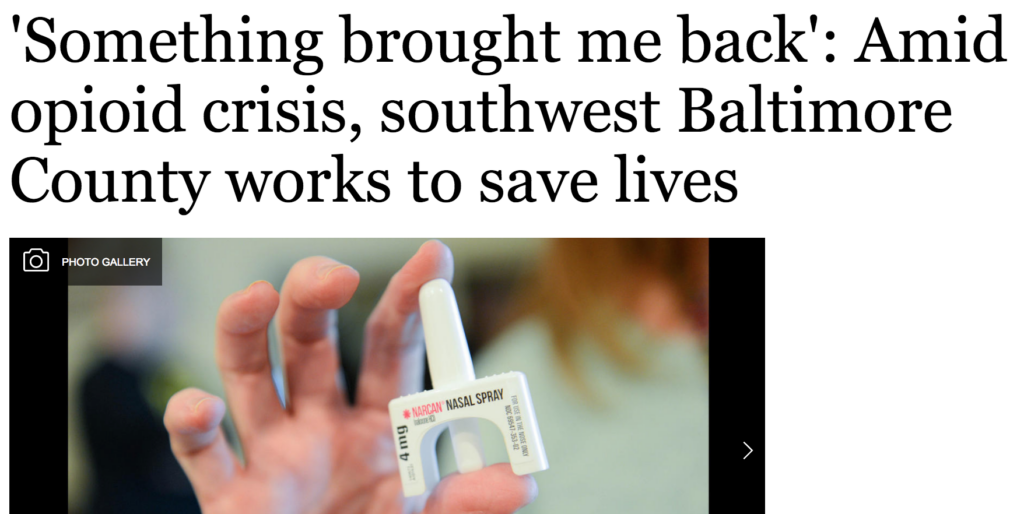“Many of those addicted to opiates or heroin truly want to stop using drugs they just don’t know how. Until the medication Suboxone became more well known, those addicted would have to lay in a puddle or sweat, urine and vomit. The withdrawal process was a living hell. What person would want to experience that type of pain and suffering” says, Public Relations Manager, Matthew Steiner at Transformed Lives MD.
Many heroin or opiate overdose victims in Baltimore County aren’t lucky enough to have access to emergency personnel or Narcan. The county has been decimated by the opiate epidemic that’s sweeping America. Baltimore County has one of the highest counts of opiate-related deaths in the state, behind Baltimore City. In the past ten years, the number of opiate-related deaths in the county has more than doubled-that is scary to think about isn’t it?
On January 23, 2018, Baltimore County social workers traveled to Christ the King Episcopal Church in Woodlawn to host a free session on Narcan training. The workshop was intended to teach people touched by overdose, how to properly administer the medication that can save the life of someone experiencing a heroin or opiate overdose.
More than two dozen people attended the workshop, which taught how to recognize the symptoms of an overdose, administer Narcan and save lives through cardiopulmonary resuscitation and contacting emergency services. Participants of the workshop received certification and were provided with two doses of the medication for emergency use.
Opiate Overdoses Know No Boundaries
According to state statistical information from the Baltimore Sun, Caucasians and males make up the biggest number of opiate deaths in Maryland. However, opiate overdoses are on the rise for men and women, for people of all ages and all ethnicities.
According to information from the Wilkens Precinct, there have been 182 overdoses between January and October of 2017, about 15 percent of the county’s total. Approximately 34 of the overdoses reported were fatal, making the rate the second highest in the county.
Without having specific numbers, residents are clearly feeling the effects of the opiate crisis within their own communities.
The Culture of Death
An overdose of opiates can be deadly, because they suppress a person’s urge or drive to breathe. Breathing and oxygen are vital to overdose survival, techniques like cardiopulmonary resuscitation and rescue breathing can and do save lives.
The workshop attendees learned how to tilt a person’s head back, insert the Narcan nozzle into a nostril and depress the plunger to dispense the drug. The plunger is hard to move, but once it does the entire dose will come out. Narcan lasts for about 30-90 minutes, so it is important to get emergency treatment quickly.
Why Opiate Addiction Treatment is the Only Option!
We all probably know someone or have even had a family member whose life has been ruined by opiate addiction. As we go forward learning more effective treatment methods and using medications like Suboxone or Subutex to help addicts become clean from opiates, we learn to hold out hope and reach for professional help to save lives. Never be ashamed to ask for help—it’s the only way and sometimes your only and last option.
Source: ‘Something brought me back’: Amid opioid crisis, southwest Baltimore County works to save lives



